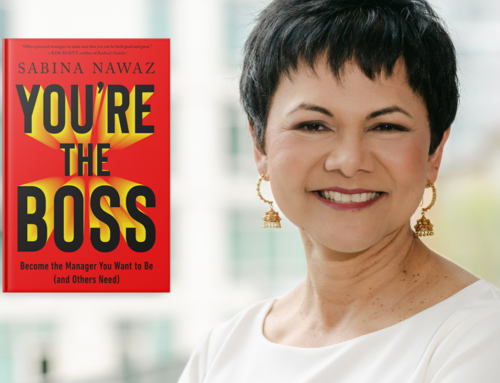David Meerman Scott is a speaker, an author, and a thought leader extraordinaire in the modern world of marketing with its influencers, newsjacking (a word David invented) and digital campaigns. His book, The New Rules of Marketing and PR, has been a perennial bestseller since its debut in 2007, and this week comes out in its 8th edition, an extraordinary achievement in an era of instant obsolescence. We are thrilled to share David’s insights into the new edition of the New Rules.
Nick: What is the secret to the evergreen appeal of New Rules?
David: I was fortunate to have worked for 15 years in the international financial information business for companies like Dow Jones and Thomson Reuters. Prior to the Web, I already understood how real-time electronic content worked to drive action. So with the rise of easy access to the Web starting in the late 1990s, what the world was seeing as new and different was normal for me.
In the first edition that was published in 2007, I wrote that the web provides tremendous opportunities to reach buyers directly, and I shared how to harness that power. What was science fiction just a few years ago is common, even expected, today. Take a moment to acknowledge how incredible it is that you can instantly create a video stream using that small device in your pocket and connect to a service like Facebook Live, Instagram, or TikTok to reach thousands of interested people who pay attention to what you are broadcasting. Or you can have a two-way video conversation with a potential customer on the other side of the planet. For free! Your mobile device is much more powerful than what the creators of The Jetsons imagined decades ago. Each of us has the ability to reach almost any human on the planet in real time. You can publish content—a blog post, video, infographic, photo—to reach potential customers who will be eager to do business with you.
This is true in 2022 just as it was back in 2007. Since then, thousands of companies use the book as their go-to marketing and PR guide. At the same time, hundreds of universities around the world have adopted the book as required reading in marketing, communications, journalism, and business courses.
Nick: How have the rules changed since the first edition?
David: The tools of marketing and public relations are constantly evolving. Consider this: When I wrote the first edition of the book, Twitter didn’t even exist, and Facebook was available only to students. Now Twitter is an essential tool of marketing, and Facebook has nearly 3 billion monthly active users around the world. And those are just two examples.
In this edition, I’ve added a new section about the rise in popularity of social audio apps such as Clubhouse. And given the increased importance of online video as part of a marketing and PR strategy, I’ve expanded the relevant sections of the book as well. I also dig into how to use AI tools for marketing and public relations.
Nick: What would you say is the most important insight that hasn’t changed since you started?
David: I wrote this for the first edition of the book: There used to be only three ways to get noticed: Buy expensive advertising, beg the mainstream media to tell your story for you, or hire a huge sales staff to bug people individually about your products. Now we have a better option: publishing interesting content on the web, content that your buyers want to consume. The same is true today!
The tools of the marketing and PR trade have changed. The skills that worked offline to help you buy or beg or bug your way into opportunity are the skills of interruption and coercion. Online success comes from thinking like a journalist and publishing amazing content that will brand you as an organization or person it would be a pleasure to do business with. You are in charge of your own success.
Nick: My father used to like to say, “All rules are made to be broken,” quoting Douglas MacArthur, I believe. Which of your rules gets broken most often?
David: Many people steeped in the tradition of product promotion naturally feel drawn to prattle on and on about their products and services. But I have news for you. Nobody cares about your products and services. Yes, you read that right.
What people do care about are themselves and how you can solve their problems. People also like to be entertained and to share in something remarkable. In order to have people talk about you and your ideas, you must resist the urge to hype your products and services. Instead, create something interesting that will be talked about online. When you get people talking on the Web, people will line up to learn more and to buy what you have to offer.
Sadly, marketers continue to hype products and services instead of understanding buyers and creating interesting content to reach them.
Nick: What’s your next project?
David: You will be the first to know when I decide on it!
Nick: Thank you and congratulations on the 8th edition!









Leave A Comment